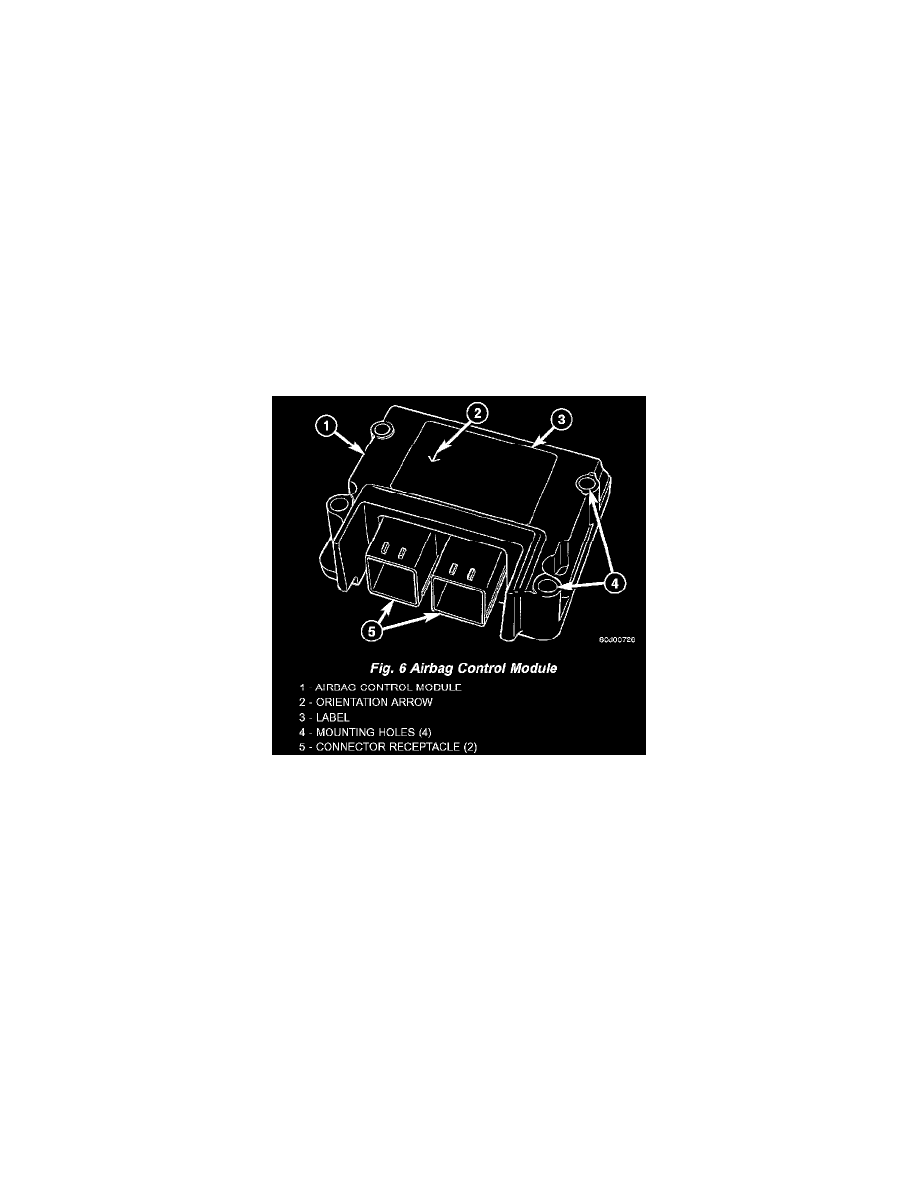Grand Cherokee 2WD Limited V8-4.7L (2002)

Air Bag Control Module: Description and Operation
The Occupant Restraint Controller (ORC) is a new type of Airbag Control Module (ACM). The new ACM supports staged airbag deployment and
remote impact sensing. Staged deployment is the ability to trigger airbag system squib inflators individually as needed to provide the appropriate
restraint for the severity of the impact. The ACM has four major functions: PCI Bus communications, onboard diagnostics, impact sensing, and
component deployment. The ACM also contains an energy-storage capacitor. This capacitor stores enough electrical energy to deploy the front airbag
components for two seconds following a battery disconnect or failure during an impact. The ACM is secured to the floor panel transmission tunnel under
the console. The ACM cannot be repaired or adjusted.
The ACM sends and/or receives PCI bus messages with the Instrument Cluster (MIC), Body Control Module (BCM), and Impact Sensors. Diagnostic
Trouble Codes (DTCs) will be set if the communication with these modules is lost or contains invalid information.
The microprocessor in the ACM monitors the impact sensors signals and the airbag system electrical circuits to determine the system readiness. If the
ACM detects a monitored system fault it sends a message to the instrument cluster via PCI bus to turn on the airbag warning indicator. The ACM can set
both active and stored diagnostic trouble codes to aid in the diagnosing system problems. See DIAGNOSTIC TROUBLE CODES.
The ACM uses two front impact sensors and ACM Accelerometer to sense the rate of vehicle deceleration, provide verification of the direction and
severity of an impact. A pre-programmed decision algorithm in the ACM microprocessor determines when the deceleration rate is severe enough to
require airbag system protection. The ACM also uses the driver and front passenger seat belt switch status (buckled or unbuckled) and crash severity to
determine the level of driver and front passenger airbag deployment, low medium or high. When the programmed conditions are met, the ACM sends an
electrical signal to deploy the appropriate airbag system components.
Fig.6 Airbag Control Module
The Airbag Control Module (ACM) is also sometimes referred to as the Occupant Restraint Controller (ORC). The ACM is concealed underneath the
center floor console, where it is secured by four screws to a stamped steel mounting bracket welded onto the top of the floor panel transmission tunnel
just forward of the park brake mechanism in the passenger compartment of the vehicle.
Concealed within a hollow in the center of the die cast aluminum ACM housing is the electronic circuitry of the ACM which includes a microprocessor,
an electronic impact sensor, an electronic safing sensor, and an energy storage capacitor. A stamped metal cover plate is secured to the bottom of the
ACM housing with four screws to enclose and protect the internal electronic circuitry and components. A printed label on the top of the ACM housing
provides a visual verification of the proper orientation of the unit, and should always be pointed toward the front of the vehicle.
Two molded plastic electrical connector receptacles exit the forward side of the ACM housing. These two receptacles connect the ACM to the vehicle
electrical system through a dedicated take out and connector of the instrument panel wire harness, and a dedicated take out and connector of the airbag
overlay wire harness. For vehicles equipped with the optional side curtain airbags, both ACM connector receptacles are black in color and the ACM
contains a second bi-directional safing sensor for the side airbags. For vehicles not equipped with the optional side curtain airbags, the ACM connector
receptacles are both gray.
The impact sensor and safing sensor internal to the ACM are calibrated for the specific vehicle, and are only serviced as a unit with the ACM. The ACM
cannot be repaired or adjusted and, if damaged or faulty it must be replaced.
The microprocessor in the Airbag Control Module (ACM) contains the supplemental restraint system logic circuits and controls all of the supplemental
restraint system components. The ACM uses On-Board Diagnostics (OBD) and can communicate with other electronic modules in the vehicle as well as
